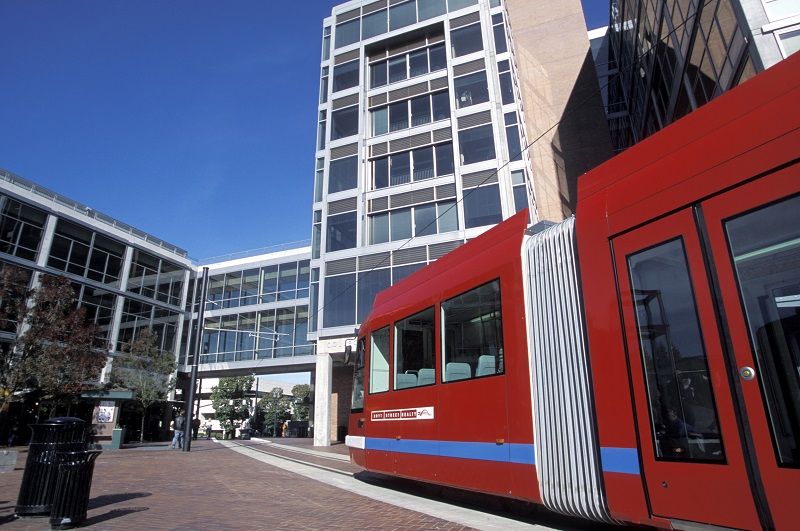September 27, 2024
Ms. Nicole Singh
Oregon Department of Environmental Quality
CPP.20244@deq.oregon.gov
Re: Comments on draft CPP rules
Dear Ms. Singh,
Cascade Policy Institute is a non-profit policy research organization based in Portland. Cascade was incorporated in 1991 and has been involved in policy development across a range of issues including energy, transportation, education and public lands management. We have reviewed the draft CPP rules and offer the following observations.
There is no demonstrated need for additional air pollution regulations in Oregon.
The DEQ website says, “In 1980, only 30% of Oregonians lived in clean air areas that met national health standards for air pollution. Today all areas in Oregon meet those standards.”
The federal Clean Air Act has always been a standards-based law. During the 1980’s and 1990’s, I served on many DEQ advisory committees and task forces developing innovating strategies to address air pollution problems caused by field burning, residential woodstove burning, radon, and automotive tailpipe emissions. All of those problems have been greatly diminished, as noted by the Department.
Oregonians should be proud that over the past half-century, ambient air pollution has dropped even as both population and GDP have grown. This is an achievement that we should be celebrating. Instead, regulators and activists have the opposite reaction. They proclaim that we have an undefined “climate crisis” that requires DEQ to intervene in the economy in ways so extreme that the legislature has never been willing to approve them. Regardless, the Department now claims to have the authority to ration energy through the rulemaking process.
Economic theory predicts that as any administrative agency gets close to achieving its mission, it will find ways to redefine the mission. That is clearly the case with the CPP. Compliance with federal standards for criteria pollutants – once considered a very large task for state environmental agencies – is apparently too boring for DEQ now that all Oregonians are breathing clean air, so the new mission is to influence trends in global climate. Of course that’s impossible.
The better approach would be to take a victory lap for all that has been accomplished in reducing criteria pollutants, and stop trying to hijack the entire economy by rationing fossil fuels.
The declining emissions caps proposed by the agency are completely arbitrary.
Oregonians might be willing to endure the slow economic starvation being imposed with this plan if there were net benefits, but there are none. Carbon dioxide is not a pollutant, it is nature’s great ambient fertilizer for Oregon’s agriculture and timber industries. If the agency succeeds in reducing anthropogenic emissions, no one in Oregon will notice or care. They will, however, notice the rapid cost of goods and services caused by energy rationing.
Substantial reductions of fossil fuel use are probably not possible regardless of how much pain DEQ inflicts through the CPP regulations.
For reference I call your attention to the regulation of fossil fuels in the electric utility sector, which began in earnest with SB 838 in 2007. That law established minimum levels of “renewable energy” that needed to be used by large utilities, rising to 25% by 2025. This mandate was known as the Renewable Portfolio Standard (RPS). We are now almost to 2025, so it’s fair to look at results.
According to ODOE, coal and natural gas accounted for 44.7% of Oregon’s electricity generation in 2012. By 2021, the market share for fossil fuels had actually increased to 46.3%. Coal use declined, but was more than offset by natural gas, which grew from 12.7% to 24.5%.
Major fuel sources for generating electricity consumed in Oregon
2012-2021
| Year | Hydro | Coal | Natural gas | Wind | Nuclear |
| 2012 | 46.0% | 32.6% | 12.7% | 5.4% | 3.1% |
| 2013 | 41.2% | 35.1% | 14.2% | 5.6% | 3.2% |
| 2014 | 41.4% | 34.1% | 14.8% | 5.6% | 3.3% |
| 2015 | 39.1% | 33.5% | 16.6% | 6.6% | 3.0% |
| 2016 | 41.0% | 28.2% | 18.5% | 7.3% | 3.5% |
| 2017 | 44.8% | 26.1% | 19.3% | 5.0% | 3.0% |
| 2018 | 43.3% | 24.8% | 21.1% | 4.7% | 3.8% |
| 2019 | 37.2% | 27.5% | 24.8% | 4.9% | 3.5% |
| 2020 | 38.9% | 26.5% | 21.5% | 7.0% | 3.5% |
| 2021 | 38.4% | 21.8% | 24.5% | 9.3% | 3.1% |
| % change | -16.5% | -33.1% | +93.0% | +72.2% | – |
This trend should not be surprising. Wind and solar generators are unreliable, so they have to be backed up by dispatchable resources at all times. In the Pacific Northwest, the regional hydropower system has played that role for many years, but the hydro system is oversubscribed. The only other option for maintaining grid reliability is natural gas.
Scholars at the National Bureau of Economic Research found a nearly 1:1 relationship between the rise of intermittent renewable sources and natural gas peaker plants, based on data from 26 countries over more than two decades. As wind and solar capacity grows, so too does the number of natural gas plants to ensure grid reliability.
The cost of RPS compliance has been rising substantially.
Ever since SB 838 was first enacted, advocates have been assuring the public that the cost of decarbonizing the grid would be trivial. But the slow ramp-up of the RPS law was deceiving. Costs jumped significantly in both 2015 and 2020 as the RPS ratchet tightened. This can be seen in the annual compliance reports of PGE, summarized below:
PGE Cost of Compliance for the Oregon RPS
| Year | Cost of Compliance | Revenue requirement | Cost premium to ratepayers |
| 2013 | $4,552,061 | $1,687,948,431 | 0.27% |
| 2014 | $4,191,304 | $1,725,966,728 | 0.24% |
| 2015 | $39,782,405 | $1,751,907,849 | 2.20% |
| 2016 | $33,733,221 | $1,755,079,545 | 1.90% |
| 2017 | $33,207,867 | $1,751,981,218 | 1.90% |
| 2018 | $47,138,245 | $1,813,197,333 | 2.60% |
| 2019 | $44,328,947 | $1,831,380,634 | 2.40% |
| 2020 | $55,148,967 | $1,831,380,634 | 3.0% |
| 2021 | $64,616,131 | $1,915,345,917 | 3.4% |
| 2022 | $60,962,005 | $2,077,407,504 | 2.9% |
| 2023 (est) | $55,060,228 | TBD | TBD |
| 2024 (est) | $53,957,639 | TBD | TBD |
| 2025 | $74,730,312 | TBD | TBD |
| 2026 | $56,373,737 | TBD | TBD |
| 2027 | $58,343,972 | TBD | TBD |
The cost of compliance since 2013 for PGE has been $387.6 million. The total known and estimated costs through 2027 is $686.1 million.
The RPS is a pure tax on ratepayers. They pay more, but receive nothing in return because compliance is measured in the purchase of Renewable Energy Certificates (RECs), which don’t even exist in the physical world. They are merely financial instruments invented by the federal government as a way to provide back-door subsidies to favored industries – mostly utility-scale wind and solar developers.
The two charts displayed above offer a sneak preview of what is likely to come if the EQC adopts the proposed CPP regulations. Fossil fuels are so essential to the Oregon economy that reducing use will prove to be impossible. In the meantime, covered entities will be forced to spend vast sums of money on Community Climate Investments and other regulatory workarounds.
The entire package of proposed rules lacks any legal, intellectual or moral basis. Carbon dioxide is not a pollutant, and even if it was, Oregon is not going to affect “global” climate.
The CPP rules should be rejected by the EQC.
Sincerely,
John A. Charles, Jr.
President & CEO












